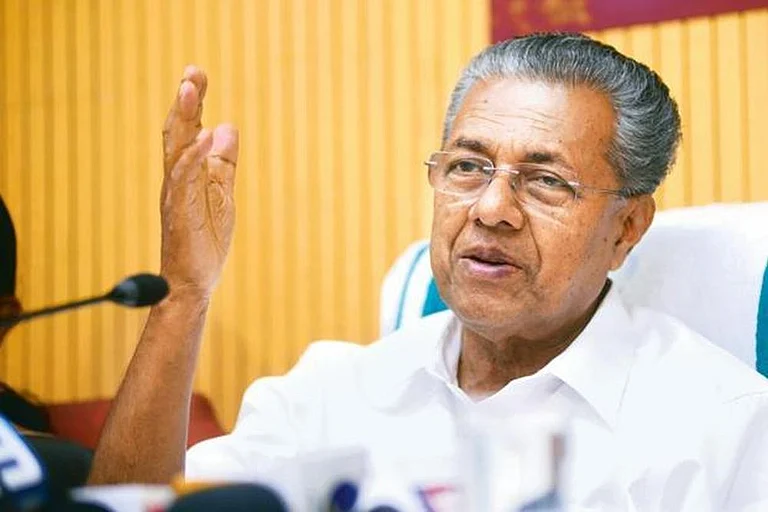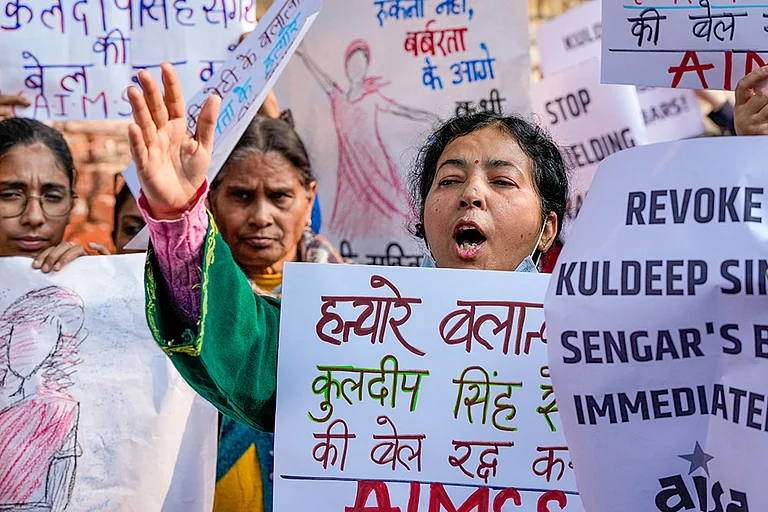Dr Sudhakar Krishnamurthi, India’s leading andrologist, is en route to Taiwan when I finally manage to get him on the phone. He is giving a plenary talk on sexual health in India at a conference. Why are the Taiwanese so interested in our sex lives? Well, it’s a long story and another conversation; right now he has a plane to catch. And with this instinctive query (that might well have cost me the interview) begin my intermittent conversations with Dr Krishnamurthi—across countries, time zones and mediums. But this is now, there was once a time, not very long ago, when people were not talking about sex. Hell, they weren’t even acknowledging it. We aren’t talking immaculate conception here; sex and its obvious outcome so lavishly exulted by census figures was the stuff of divine manifestation. Everyone was ‘blessed’ on a routine and frequent enough basis.
But let’s step back a couple of decades, to the ’80s, a time of crotch-hugging trousers, disco balls and quivering bushes that articulated the sex act. It was a time of shimmy but very little evidence of actual dance, and Dr Krishnamurthi, currently director, Andromeda Andrology Centre, and member, WHO special committee for sexual health, was a young intern in baggy scrubs at The Nair Hospital and T.N. Medical College, Mumbai. If life wasn’t frustrating enough, he had his unit chiefs and seniors bumping off sexual dysfunction cases on him. Their diagnosis was straightforward, these were loonies. The buck stopped with me, he recalls, the use of the term buck clearly tragic in the circumstances. Because here were a bunch of people walking around thinking there was something wrong with their heads, when the problem was clearly south of the border. With no experience in psychology (then), the young doctor diagnosed his patients based on his interactions with them and averted, most notably, the curative measure of electro-convulsive treatment (shock therapy) prescribed for some of his female patients. There was no need, he says, the complaints seemed normal to him; the absence of sexual desire post childbirth, painful intercourse etc all pointed to the physiological rather than the psychological. In those days, the medical profession did not know that diabetes, blood pressure and many other medications/conditions could cause sexual dysfunction. It upset him more than he realised and a chance to perform a successful surgery on the vas deferens convinced him this was the line of work for him. And so an andrologist was born.

Andrology is to men what gynaecology is to women. And he remembers his first patient, a young man who after multiple surgeries to his urethra came to him with an impotency problem. Erectile dysfunction, premature ejaculation and reduced desire are the most common dysfunctions in middle-aged Indian men. In women, absent desire, lubrication disorders, pain and orgasm disorders are the most prevalent. Today we live in an era with a high level of sexual precocity and ignorance, a dangerous oxymoron. It reminds me of an incident with a friend whose ten-year-old son caught sight of her in her underwear. Mom, he asked, taking note of her unflattering choice of undergarment, why are you wearing a diaper? Popular culture is drenched in sexual innuendo, the access to sex that captures the imagination (but not necessarily reality) a click away. So when Dr Krishnamurthi tells me it is very common for men to suffer from hypoactive sexual desire disorder (HSDD), it busts a few myths. Don’t men always have sex on their mind and aren’t women the ones with the proverbial headache?
Dr Krishnamurthi believes it’s time to ditch the cliches. In his opinion, “India may very well be the impotence capital of the world, more than 50 per cent of men over 40 suffer from impotence.” Popular film with its own uncanny and wavering sense of resonance seems to have responded with a much-in-demand Sheila crooning contentedly, “Kisi aur ki mujhko zaroorat kya, main toh khud se pyaar jataun”. The autoeroticism reference, though possibly unintentional, may come as a welcome relief for many men. Women delivering on a very different fantasy—one that doesn’t place sexual demands on their partners! While one can jest, the pressure on men in these circumstances must be tremendous. And here’s where it gets complicated, while the andrologist attests that the cases are predominantly physiological, the psychologist believes it’s in the mind. In fact, that’s the first thing that Dr Sameer Malhotra, head, department of psychiatry and psychotherapy, Fortis Hospital (Noida), corrects me on when I broach the subject. “That’s what they all say (andrologists),” he responds confidently, “but it’s all in the mind.” That’s the rub when it comes to ‘second opinions’—they always leave one confused. And while there could well be physiological causative factors, the debilitating effect a ‘condition’ could have on the mental health of a person cannot be ignored. Dr Malhotra elaborates, “Sexuality is not just about a physical act but involves a flow of emotions. It incorporates concepts of comfort, self-image, norms, beliefs, development, attitudes, fantasies, perspectives and understanding. Mind and body are interrelated. Neurochemicals and hormones affect the psyche (thoughts, mood and behaviour) of which sex is a part; stress, guilt, lack of privacy, lack of bonding, misconceptions and myths can precipitate towards sexual dissatisfactions and dysfunctions.”
Urban Indian living finds the values of the past unhappily juxtaposed with the aspirations of the present. Each exercises its limiting hold over the individual and his or her personal happiness; life is complicated by too many choices as opposed to a lack of them. The survey has indicated that middle-aged Indians are open to sexual experimentation like never before, or at least more than five years ago—with 74 per cent of men and 67.7 per cent of women surveyed responding in the affirmative. Dr Malhotra believes this has to do with the environment we inhabit today, with the media explosion, sexually suggestive advertising, comedy shows with sexual connotations, increasing depiction of sexual acts in films and media, easy internet access—with pornographic sites available at the click of a mouse. The sensitive area of sex is open to choice, exhibitionism, experimentation and exploitation. But is it still a conversation point?
A friend had the most interesting side job, for a princely sum of eight thousand rupees a month she had to ‘create’ fictional questions for a doctor who dispensed advice in the sex help column of a popular publication. Each month she delivered 30 questions, the queries ranging from the titillating to the macabre. Ethicality and hilarity aside, she tells me it was also necessary, people were just not writing in and we all know there are questions out there about that which cannot be named. So is it any surprise that when the numbers come in, the survey reveals that only 27 per cent of people seek medical help for their dysfunctions, whilst nearly 41 per cent pop pills, presumably without medical supervision. We are in a lot of ways a generation of pill-poppers with an enabling precocity that helps us recognise the issue and address it without ever confronting it.
And in no demographic has the absence of the acknowledgment of sex and pleasure been more glaring than with women. Both the doctors agree that desire disorder is the most common sexual dysfunction in women. These women display a low level of sexual arousal, orgasms or pleasure in the sex act. Sex avoidance is the norm in a lot of marriages with partners with differing levels of libido. With women, it has been characterised as a dysfunction that is treatable. Recently when I had a patdown at JFK on a trip to New York, a married male friend teased me and said he called it “getting some”. Sometimes in humour lie the greatest truths. What is joked about is very often a sexual dysfunction and the tragedy is that while there is a solution and medical help at hand, so few seek it and address the issue.
So when the survey comes back reporting that 40 per cent and 50 per cent of people are very satisfied or satisfied with their sex lives, one has to ask, who are these people? And why then do the figures for other questions posed to the same respondents suggest otherwise? Are we then lying about our sex lives, even in the privacy of anonymous surveys? Is Delhi the most sexually satisfied city? Well, Delhiites are known to be big talkers, this fits the prototype. And is Ludhiana, the hosiery and imported car capital of the country, a hotbed of extramarital indulgences? Well, you know what they say about fast cars! At the end of the day, our dialogue with sex remains deluded, remains sheathed in a cloak of cliches, one answering the other. Bawdiness stands in for the fact and other indulgences provide necessary diversions from primal needs. Sex is interesting, so it is discussed to the extent that is fashionable, beyond that it is sublimated. And one is reminded of Charles Bukowski’s possibly profound words, “Sex is interesting, but it’s not totally important. I mean it’s not even as important (physically) as excretion. A man can go 70 years without a piece of a**, but he can die in a week without a bowel movement.” So, till the next issue, and in the spirit of the festive season, here’s wishing everyone is “getting some”!

























